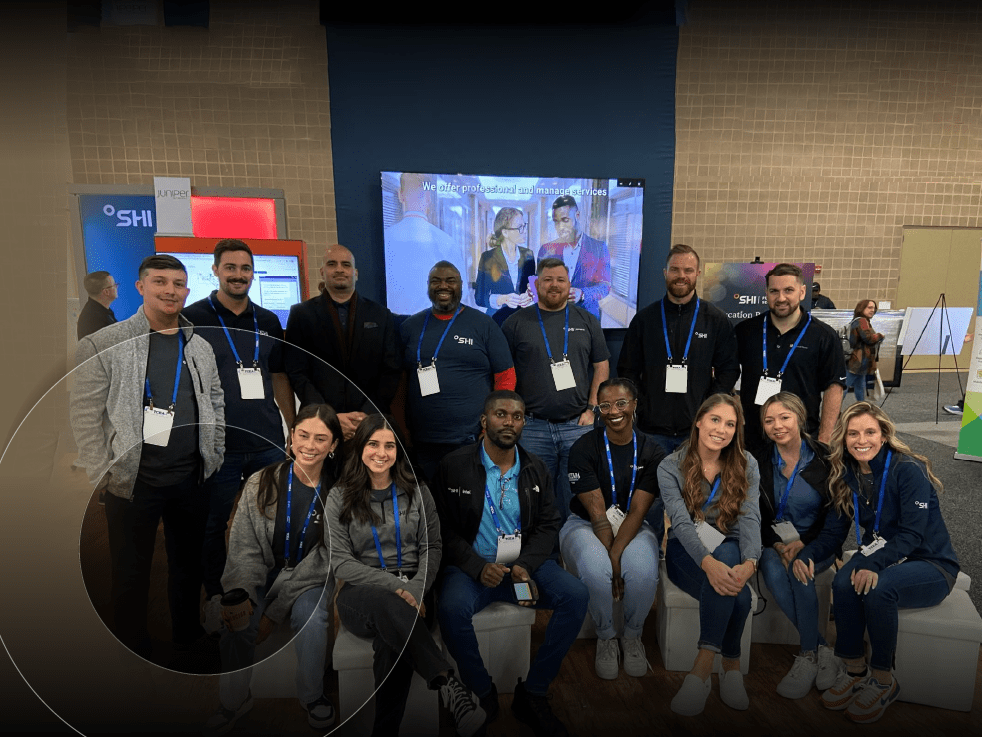Bundling DaaS and VDI: Why combining the two is good for business

This post was updated in January 2021.
When we first published this post, organizations had mixed feelings about supporting work from home (WFH) and bring-your-own-device (BYOD) strategies. At the time, we felt combining Desktop as a Service (DaaS) and Virtual Desktop Infrastructure (VDI) was a great way to promote user flexibility while retaining a safe desktop environment.
Of course, now in 2021, the hybrid workforce is here to stay, and that need for safe, consistent, and reliable desktop experience remains. Indeed, combining DaaS and VDI is still one of our recommended solutions for many organizations.
What benefits does this combination offer, and how can it make managing your infrastructure easier? Let’s discuss.
What is DaaS with VDI?
DaaS with VDI brings a managed service approach to both your hardware and your desktop by bundling both together for the simplest deployment and regular updates.
With various support, security, and on- or off-premises options, this solution can be customized to fit both your budget and unique requirements.
Look for DaaS with VDI that’s hardware agnostic so you can further align your devices with your organization’s needs.
What are the benefits of using DaaS with VDI?
By combining DaaS and VDI, you have the flexibility to turn a capex service into an opex service. This simplifies budgeting, giving you a fixed monthly term fulfillment subscription for bundled hardware and VDI services. But the benefits go far beyond pricing.
Increase productivity and security. Every day, employees lose valuable work time to outdated technology, which does not effectively protect against security threats and takes longer to perform operations than newer devices. DaaS with VDI alleviates that concern. Through DaaS with VDI, you can refresh your end-user technology every three years. Beyond the productivity gains from using the latest devices, DaaS with VDI also improves security by limiting physical access to workstations and ensuring they’re using the latest technology.
Centralize your solution and deployment. Because DaaS with VDI is a centralized solution, workstations are placed closer to the data your users need to access, increasing the performance of their devices. By centralizing deployment, you can more easily manage application deployment, updates, patching, and more by doing so as a whole rather than machine by machine.
Address compliance and disaster recovery. Organizations can eliminate compliance issues by ensuring devices are secure and access is restricted, even for remote workers. DaaS with VDI also makes backing up and restoring infrastructure easier and can help users get back to work faster following a disaster.
Make the user experience more consistent. With DaaS with VDI, users have an identical experience whether they access the system on-premises or remotely, no matter the device. It also makes it easier to fast-track OS upgrades for all users, ensuring everyone is up to date and has the latest tools and features available to them.
Why your organization should consider DaaS with VDI
DaaS is not exactly a new offering. Neither is VDI. However, when bundled together and made agnostic, you have a solution that can truly improve your business.
DaaS with VDI tackles budgetary hurdles, and removes the guesswork from sizing, implementing, and supporting a full VDI solution. In the end, you get all the benefits of VDI without the headaches of designing or supporting the environment.
Supporting the hybrid workforce of the future
The demand for increased flexibility is more important than ever, as businesses seek to enable remote and hybrid workers. Organizations are looking at alternate endpoint strategies to maximize this demand, including accelerated shifts toward the public cloud.
Public cloud providers like Microsoft Azure, Amazon Web Services, and Google Compute Cloud provide a global infrastructure that can be rapidly deployed from anywhere to every major region in the world. IT professionals can quickly consume this global infrastructure and provide a VDI solution that scales to meet the needs of any organization, from small to global enterprises.
Work is no longer considered a place, but rather a series of tasks that can be performed anywhere and at any time. Organizations are looking for ways to enable employees to be productive, secure, and more collaborative. The digital workspace — a combination of VDI, DaaS, collaboration, and security solutions — delivers an optimal end user experience. Furthermore, enabling employees to work from any location with the device of their choosing is a great way to attract and retain top talent.
How SHI can help
That’s why SHI continues to recommend bundling DaaS and VDI as a highly effective, alternative desktop delivery model – along with security solutions, such as Zero Trust and endpoint protection, and collaboration solutions, such as Microsoft Teams or Cisco WebEx. SHI not only manages the end user device, but also provides the complete Digital Workplace solution and a fully managed public cloud deployment. This provides customers with the complete flexibility, security, and agility to meet the demands of the modern workforce.
It also gives IT and cybersecurity professionals control and deep access into your digital workspace environments during a time when leaders are looking to improve processes, streamline efficiencies, and enhance securities across dispersed landscapes.




